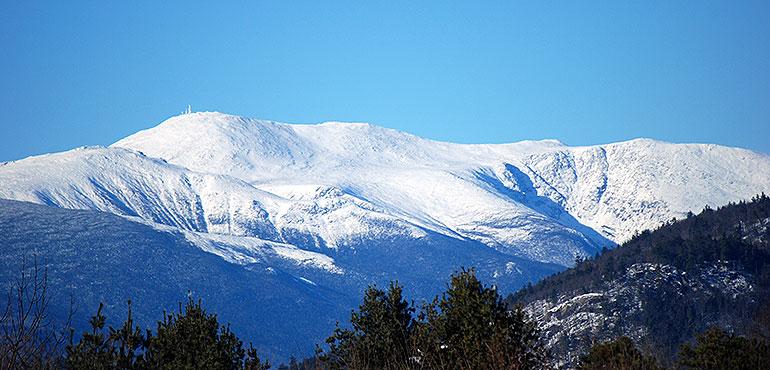Back to forecast
Mount Washington: Home of the World’s Worst Weather
August 16, 2021 at 10:46 AM EDT
By WeatherBug

Standing at 6,288 feet, New Hampshire’s Mount Washington is the highest peak in the northeastern United States. Originally called Agiocochook by native Americans, the mountain boasts some of the planet’s most severe weather.
Mount Washington’s weather is notoriously extreme. In winter, Mount Washington experiences sub-zero temperatures, hurricane-force winds, snow and ice that essentially turn the peak into an Arctic outpost in a temperate climate zone. In fact, winter conditions at its summit can rival those of Mount Everest.
Mount Washington receives very high levels of precipitation — about 97 inches of precipitation per year on average. A large portion of this precipitation falls as snow. Just over 4 feet of snow fell during a 24-hour period on February 1969 — setting a record.
Hurricane force winds occur an average of 110 days per year. Mount Washington holds the Northern Hemisphere and Western Hemisphere records for directly measured surface wind speed — 231 mph, which was recorded on April 12, 1934.
Not surprisingly, the historic, original structure at the summit is chained to the mountain to keep it in place during the most extreme conditions.
On January 16, 2004, the summit weather observation registered a temperature of −43.6 °F and sustained winds of 87.5 mph, resulting in a wind chill value of −102.59 °F on the mountain. During a 71-hour stretch from around 3 p.m. on January 13 to around 2 p.m. on January 16, 2004, the wind chill on the summit never went above −50 °F.
The official record high temperature at the summit is 72 °F on June 26, 2003 and August 2, 1975. The official record warm daily minimum is 60 °F. Readings of 60 °F or more at the summit are seen on an average 16 days annually.
According to the Mount Washington Observatory, more than a quarter million people visit the summit each summer by car, train, or foot. Whenever you visit, we recommend that you be prepared for weather extremes!
Mount Washington’s weather is notoriously extreme. In winter, Mount Washington experiences sub-zero temperatures, hurricane-force winds, snow and ice that essentially turn the peak into an Arctic outpost in a temperate climate zone. In fact, winter conditions at its summit can rival those of Mount Everest.
Mount Washington receives very high levels of precipitation — about 97 inches of precipitation per year on average. A large portion of this precipitation falls as snow. Just over 4 feet of snow fell during a 24-hour period on February 1969 — setting a record.
Hurricane force winds occur an average of 110 days per year. Mount Washington holds the Northern Hemisphere and Western Hemisphere records for directly measured surface wind speed — 231 mph, which was recorded on April 12, 1934.
Not surprisingly, the historic, original structure at the summit is chained to the mountain to keep it in place during the most extreme conditions.
On January 16, 2004, the summit weather observation registered a temperature of −43.6 °F and sustained winds of 87.5 mph, resulting in a wind chill value of −102.59 °F on the mountain. During a 71-hour stretch from around 3 p.m. on January 13 to around 2 p.m. on January 16, 2004, the wind chill on the summit never went above −50 °F.
The official record high temperature at the summit is 72 °F on June 26, 2003 and August 2, 1975. The official record warm daily minimum is 60 °F. Readings of 60 °F or more at the summit are seen on an average 16 days annually.
According to the Mount Washington Observatory, more than a quarter million people visit the summit each summer by car, train, or foot. Whenever you visit, we recommend that you be prepared for weather extremes!